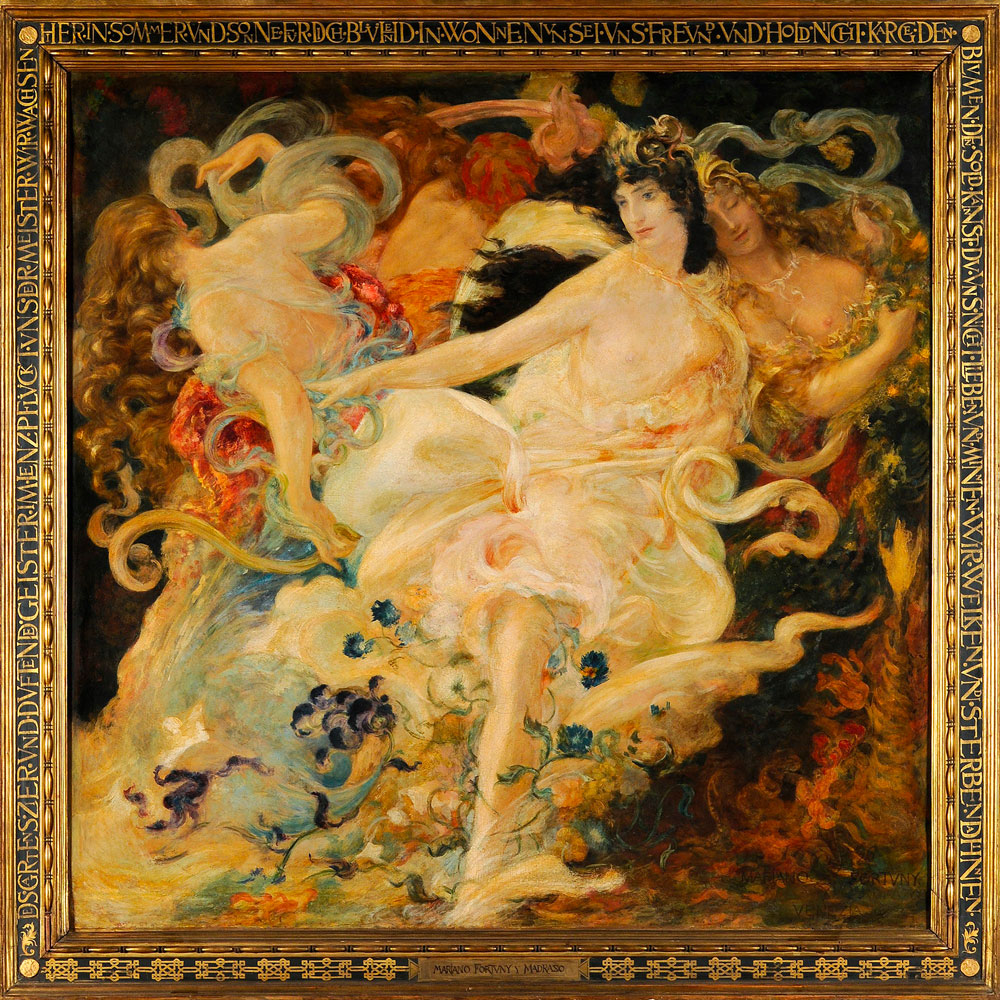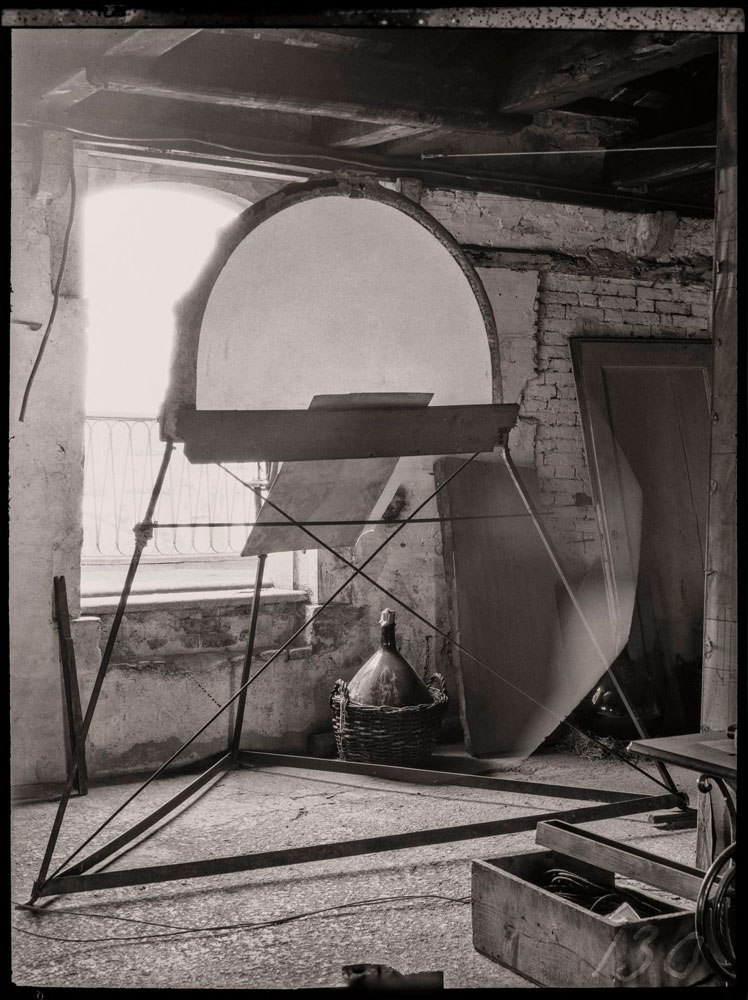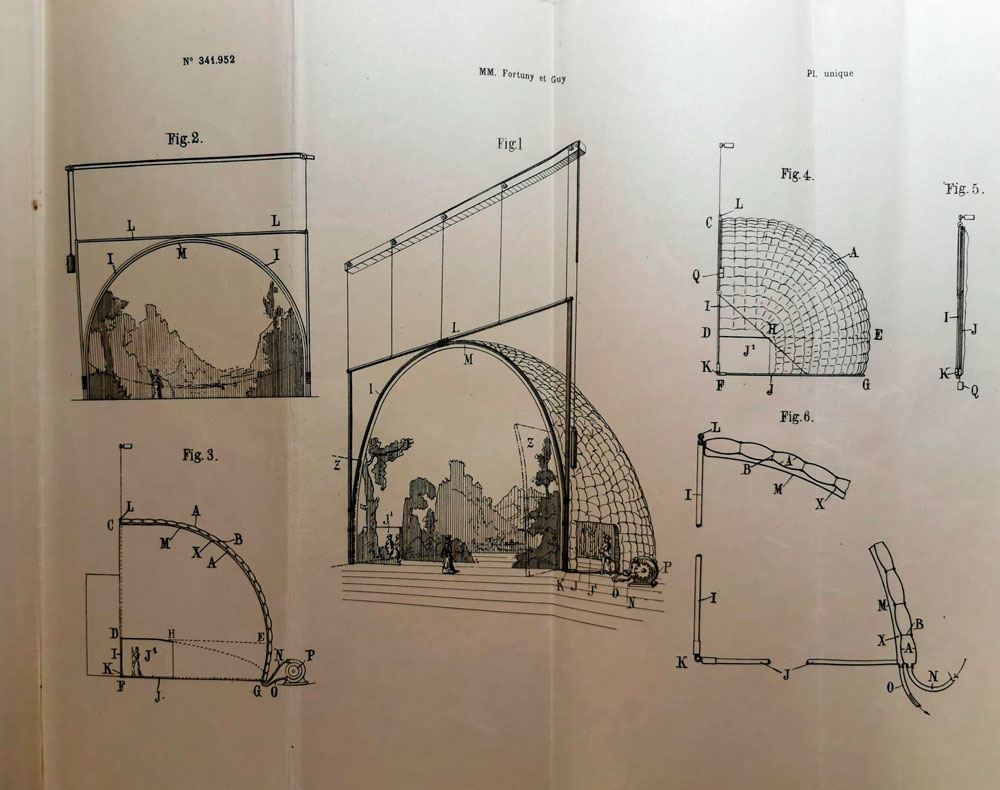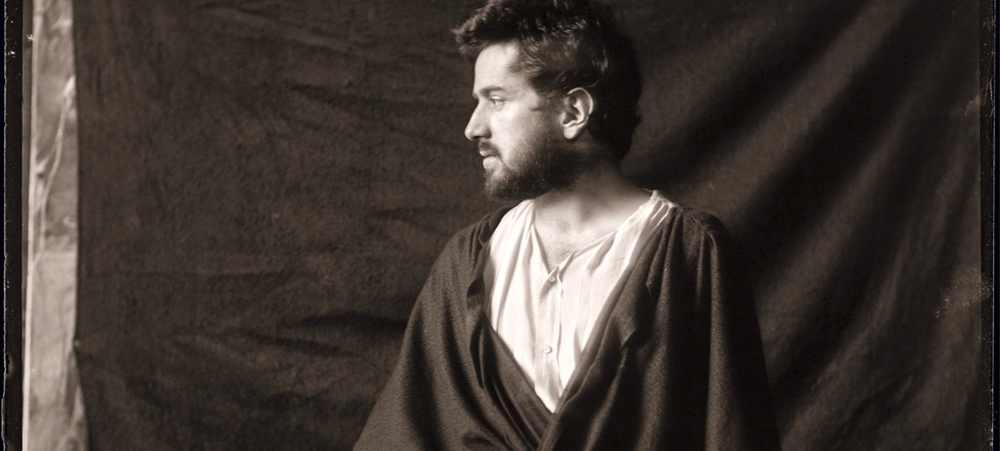Throughout the early 1890s Mariano Fortuny dedicated himself to a cycle of paintings and engravings inspired by Richard Wagner. Wagner’s music, to which he was introduced by the Spanish painter Rogelio de Egusquiza, was one of the fundamental principles of his artistic creativity. During the Summer of 1891 Fortuny went to Germany for the first time and visited Munich, Nuremberg and Bayreuth, together with his mother Cecilia, his sister María Luisa and Rogelio de Egusquiza himself, who presented Cosima Wagner to them the following year. From May to August 1893, he stayed in Madrid due to the health issues of his grandfather Federico de Madrazo. 1894 saw the birth of an artistic partnership between Mariano and Gabriele D’Annunzio, who met each other in Venice, giving life to ambitious projects in order to re-stage the scenic setting.

A series of successful achievements followed: the Spanish artist became a member of the Supervisory Commission for the restoration of ancient paintings at the Gallerie dell’Accademia in Venice; he showcased four paintings, a pastel and seven etchings at the Florence’s Exhibition of Fine Arts, Art and Flowers Festival; he was elected Honorary Academician by the Academy of Fine Arts of Venice and won the gold medal at the VII Internationale Kunstausstellung of Munich with the Wagnerian painting Ornamenti del giardino e spiriti odoriferi or Le Fanciulle-fiore and, last but not least, he drew the new frontispiece of the Florentine literary and artistic magazine “Il Marzocco”.

Furthermore, throughout 1900 he designed scenographies – such as the one for the first act of Gilbert and Sullivan’s The Mikado, staged in the Countess Albrizzi’s palace in San Polo – and maquettes, for La Scala Theatre’s Tristan and Isolde and for Francesca da Rimini, as requested by D’Annunzio and Eleonora Duse, a collaboration that stopped, however, despite the project’s identity.
From 1898 to July 1906, Mariano Fortuny purchased and renovated Palazzo Pesaro degli Orfei, in San Beneto, creating a real atelier on the top floor, where he developed the idea of a scenographic device capable of generating an illusion of spatial depth, to replace painted backdrops: the Dome.
Starting from October 23rd, 1900, he filed in Venice the first patent for his stage lighting system with indirect light, which was then improved in Paris, where he moved in December. The patent was later deposited in France, Germany, England, Spain, Belgium, Russia and North America. On January 20th, 1902 his first collapsible dome was installed in an industrial pavilion assigned by the Compagnie Générale des Construction Électriques. In the same year Mariano Fortuny met Henriette Nigrin.

Sources:
I Fortuny. Una storia di famiglia, Museo Fortuny Venezia, Palazzo Orfei, curated by Daniela Ferretti with Cristina Da Roit, 2019
Mariano Fortuny. His Life and Work, Guillermo de Osma, V&A Publishing, 2015
Archivio Fotografico, Palazzo Fortuny, Fondazione Musei Civici di Venezia


